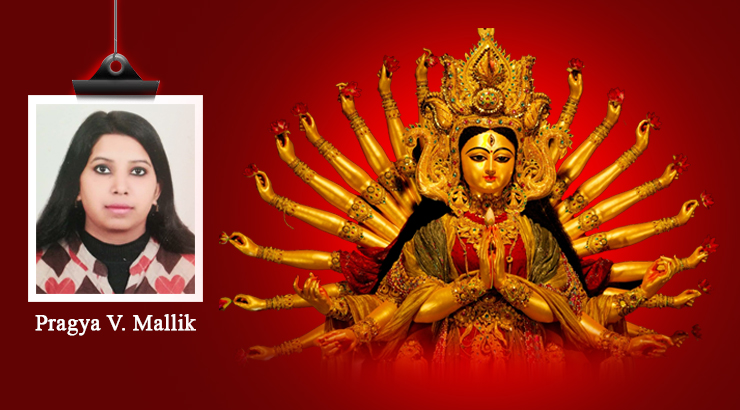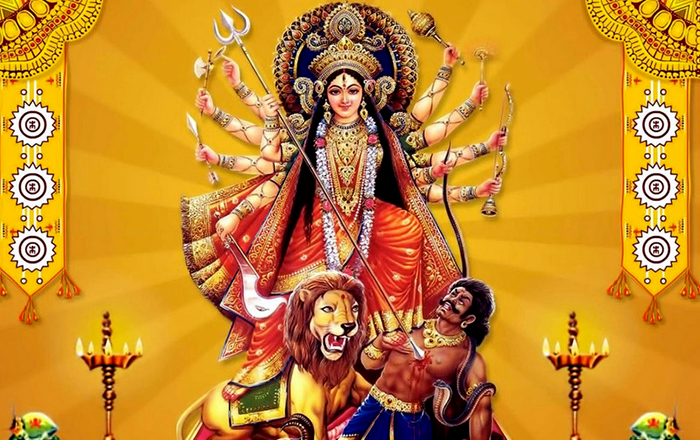
It’s a great time again in Nepal. After all it is annual Dashain festival again.
This year, it all started on 10th October, the new moon day, and will last till 24th October, which is a full moon day/night.
The whole environment is enveloped by a festive mood and merry making by people of all age groups is the salient feature. Dashain is fun time of the year for most Nepalese and the Hindus.
All Hindus celebrate this festival with much gusto and enthusiasm all over the world, though local variations in styles of celebration do exist across geographies.
To a large number of people in Nepal this festival becomes an occasion for family reunion for people working far and wide. People also use this occasion to extend best wishes to each other for health, happiness, success, prosperity and peace.
Hindu devotees worship goddess Durga and many of her manifestations during this festival. There are many stories and myths about the origin and the reason for celebrating Dashain. One story says that Dashain commemorates the victory of Lord Ram over “demon” king Ravan of Lanka. Another story says that the festival commemorates slaying of demon Mahishasur by Goddess Durga.
Whatever be the story, the festival is a celebration of victory of good and truth over evil and falsehood. Demon represents the dark forces, the devilish forces, and the falsehood.
Triumph of goodness and truth over devilish people and falsehood is aspired for and commemorated by all people across the globe. It is interesting that the battle between goodness and evil is a widely prevalent theme in many religious and cultural traditions across the world. It seems the battle between these two forces is an eternal one, which perhaps started right after creation of the existence.
Beginning with the new moon day, each day is marked for one particular aspect of Goddess Durga. They are Shailputri, Brahmacharini, Chandraghanta, Kushmanda, Skandmata, Katyayayini, Kalratri, Mahagauri and Siddhidatri respectively. Since the total number of aspects of Durga is nine, they are collectively called “Navadurga”, which can be literally translated as nine Durga.
In the plains of Nepal – the Madhesh region — large and small idols of Goddess Durga is made and worshiped. Worship of Durga and chanting of mantras is a very common. Many people fast for nine days, fully or partially. Many others eat fruits only during the nine days starting from the new moon day.
The worship and the mantra chanting etc can perhaps be referred to as the exoteric aspect of Dashain or Vijaya Dashmai. But there is also an “esoteric” aspect of the festival, with different interpretations.

According to esoteric tradition, Dashain is actually an occasion for an inner battle and a time to “fight” with and “slay” the inner “animals” and inner “demons”. Generally, inner enemies or inner demons are defined as lust, anger, greed, attachment, jealousy, and hostility that have home within each human being. Together, they are referred to as “shada ripu”, or six enemies. “Shada” means six and “ripu” means foe. Some add one more “demon” in the list: “ahankar”, or ego.
The word Dashain comes from a Sanskrit language root word meaning ten. Another name for Dashain is Vijaya Dashami, which may be translated as “victorious ten”.
Each of the first nine days is dedicated to one particular aspect of Navadurga or nine Durga. People who follow exoteric aspect of Dashain either spend time in intensive worship of particular aspect or Durga or reading of Durga Saptashati, an ancient Sanskrit scripture dedicated to Goddess Durga. The tenth day is time for celebration.
For spiritual aspirants the ten days of Dashain have different meaning and purpose. These spiritual aspirants, who are small in number, use each day and night of Navaratri to gradually get rid of inner enemies by way of penance, meditation and various spiritual practices. For these people, the tenth day is simply a celebration of attainment of inner purity after “slaying” of “inner demons” in the previous nine days.
Though the ten days of “Dashain” ends on the tenth day, in practice it extends up to the full moon day, thus making the total day count to fifteen. This full moon day is called “kojagrat purnima”. The word “purnima” means full moon day and “kojagrat” can be roughly translated as “who is awake?”
Again for the large number of people who follow exoteric aspect, the full moon day/night is another occasion for celebration. Some even expect bounties from the divine and remain awake the whole night in expectation of that bounty lest they “sleep’ and miss it.
However, for the spiritual aspirants who follow the esoteric aspect of Dashain the “kojagrat” day signifies a full moon day after five days of Dashain, when the divine might bless them with enlightenment or god-realization or personal experiential realization of the ultimate truth. Only that person is considered “awake” on “who-is-awake-day” who has attained enlightenment. In the Hindu tradition “awakening” also means awakening from ignorance and having a personal experiential realization of God.
Whether one follows the exoteric or the esoteric aspect of Dashain, it certainly gives a huge consolation to believe that the righteousness, the good and the truth do ultimately triumph in spite of all seemingly insurmountable odds. Isn’t this consolation enough reason to celebrate? To me the answer is: of course, very certainly. So, let’s celebrate!
(The author worked as a lecturer in engineering in a college in Kathmandu and as a senior systems engineer in an IT company in Bangalore, India.)










